|
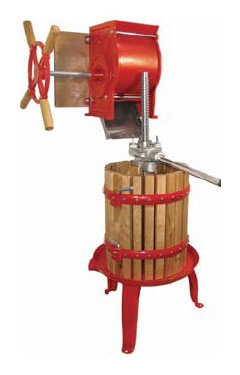 The Wine Making Process The Wine Making Process
Making wine at home is possible if you have the neccessary equipment and a helping hand from someone that has made wine at home before. There's a lot of work involved, especially in cleaning and sanitizing, but the sense of accomplishment the winemaker can get from producing a few dozen bottles of extremely drinkable wine is a satisfying feeling and accomplishment.
The grapes ripen in late August or September depending on the seasonal climate conditions. The winemaker tastes the grapes, chews the seeds, and measures the sugar content to decide when to harvest the grapes.
While the process seems complicated, it makes logical sense. If you are sincere about creating a home vintage, then you might want to consider buying a wine making kit that can help simplify the process. Making wine at home can also help enhance your everyday wine drinking experience as you gain a more thorough knowledge of how it is created.
We will be adding videos in the near future showing you the classic way of making wine at home.
Start with good grapes. The best grapes to use for winemaking are known as vinifera grapes. These include popular varieties like cabernet, chardonnay and merlot. These grapes grow best in cooler climates. The quality of the resulting wine depends in part on the soil and weather conditions where the grapes were grown. Muscadine grapes, which grow in the South, can also be used, but these grapes tend to produce only sweet wines.
To make wine, first grow grapes until they are ripe. Ripeness can be judged using the Brix scale, which rates a grape's sweetness. You can also wait for the grape's moment of physiological ripeness by taking into account how ripe its seeds and skin are based on color or other attributes.
It is advisable to ask someone that has made wine befor to at least help you choose the grapes. Once you have purchased the right grapes these are the initial steps:
When drinking is done responsibly and moderately, alcohol withdrawal treatment is not likely to be needed anytime soon.
To order The Italian Cook Wine Making Products online, please go to our My Shop area by clicking here.
|
| |
 Destemming Destemming
In this step, the stems are removed from the grapes. Stems carry harsh tannins so this is usually done before the grapes are crushed so as not to influence the wine.
|
|
| |
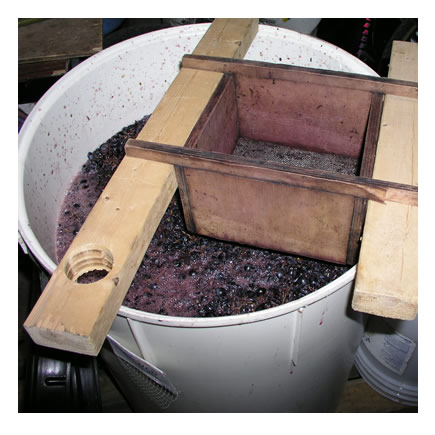 Crushing Crushing
Here the skins of the grapes are broken to release the fruit. Each winemaker will have their own preferences concerning the amount of crushing that should occur. For example, if he or she is trying to create a fruity aroma they might decide to leave the berries nearly intact.
|
|
| |
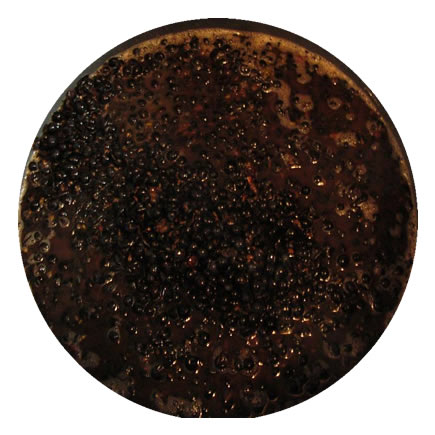 Primary Fermentation Primary Fermentation
In this step, yeast cells in the wine feed on sugars and produce carbon dioxide and alcohol. Winemakers will often add extra yeast to insure a stable conversion instead of simply relying on the yeast found on the grapes.
|
|
| |
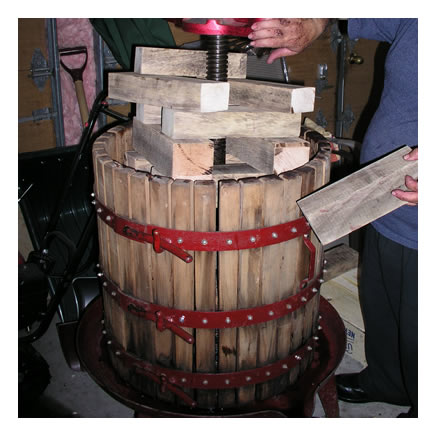 Pressing Pressing
Here more juice is extracted when the grapes are pressed even further. This juice is usually not as high quality as that from the crushing stage because the free run juice has less contact with the skins and stems that have more tannins. Nonetheless, winemakers will use pressing to increase their grape yield. Usually, this pressed juice gets used in lower end wines.
|
|
| |
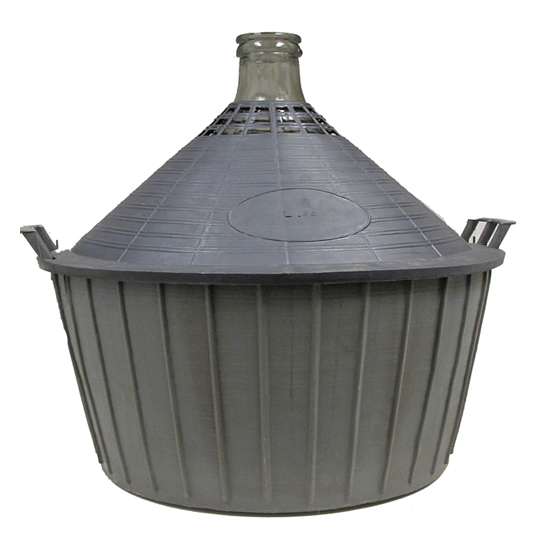 Secondary Fermentation Secondary Fermentation
Aging and secondary fermentation happen at the same time. The yeast continues to ferment slowly. The goals of the winemaker will determine the length of time this fermentation will be allowed to continue. A fine wine might stay in oak barrels for quite some time while a home style variety could spend only a few months in glass containers.
|
|
| |
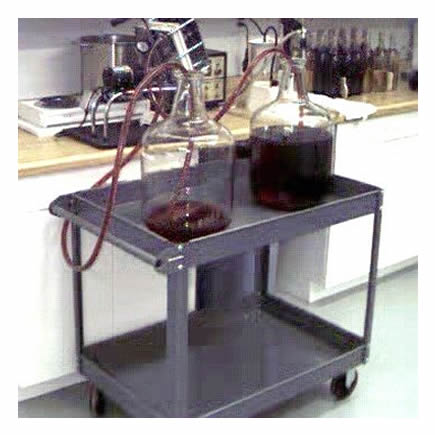 Filtering Filtering
A brilliantly clear wine is more appealling than a cloudy or hazy one. The cloudy or hazy wine may taste fine, but it does not look finished. This is why virtually all commercial wines are filtered. Sterile filtration is the ultimate act of clarifying a wine, leaving it sparkling clear,and pleasing to look at and virtually incapable of refermenting. Filtration removes yeast, bacteria, and grape or fruit debris from the wine. This not only renders the wine instantly clear , it also makes the wine more stable because yeast or bacteria that could feed off residual sugar have been removed. As a result, the amount of SO2 and other chemical preservatives can be reduced.
|
|
| |
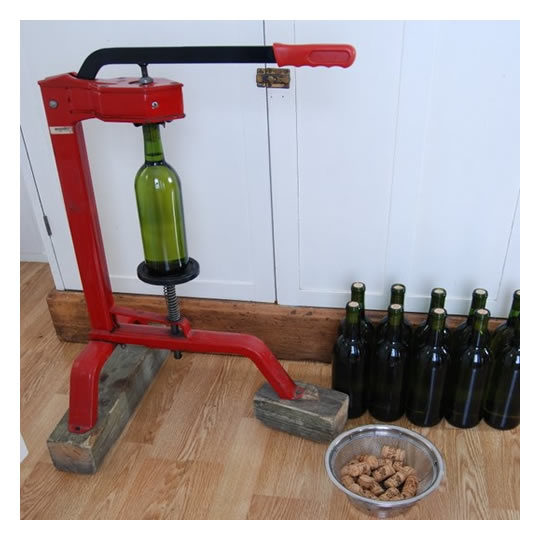 Bottling Bottling
This is the final step. Here the wine is put into bottles. Sulfites are sometimes added to help end the fermentation process and preserve the wine. The bottle is then sealed with a cork.
|
Red Grapes - Red Wine
|
|
 |
|
Cabernet Sauvignon red grapes
|
| |
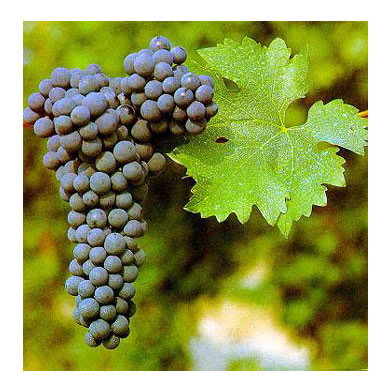 Cabernet Sauvignon Cabernet Sauvignon
A robust grape grown the world over that produces a wine rich in tannin. The characteristics of the wine can vary considerably depending on when the grapes are picked (some climates don't permit it to reach full maturity). Despite the notoriety if its name, buying a Cabernet Sauvignon doesn't guarantee you a good wine. These grapes are used to make a large range of wines, varying in price and quality. In France, Cabernet Sauvignon is often associated with other grapes such as Merlot.
|
|
| |
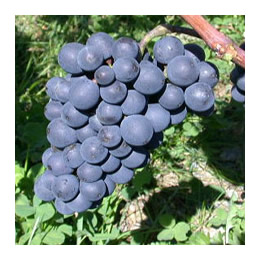 Gamay Gamay
In France, this grape is grown in Beaujolais. Gamay grapes produces light red wines, low in tannins.
|
|
| |
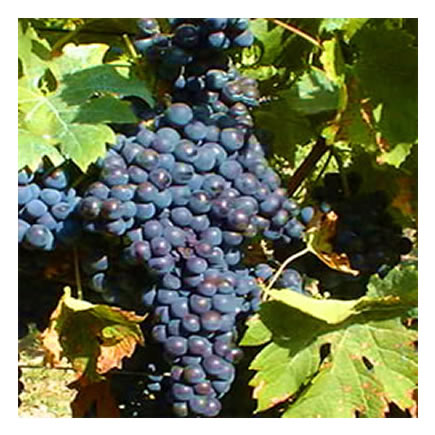 Merlot Merlot
These types of grapes produce a deep colored, full bodied wine that is low in tannin and often has the flavor of prunes or sometimes chocolate. It is cultivated in the Bordeaux region, along with Cabernet Sauvignon.
|
|
| |
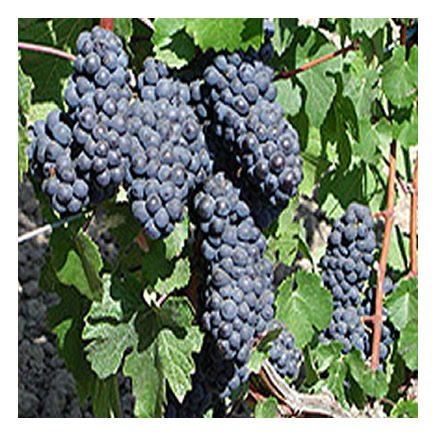 Pinot Noir Pinot Noir
As this is a more difficult grape to grow, you will have a harder time finding wines made from this grape. In France, Pinot Noir is grown in the Bourgogne region and produces a paler, lighter wine than the popular Cabernet Sauvignon or Merlot. It is not so high in tannins, although it is sometimes aged in oak barrels to encourage this quality. The flavors and aromas vary considerably depending on the growing and processing of these grapes.
|
|
| |
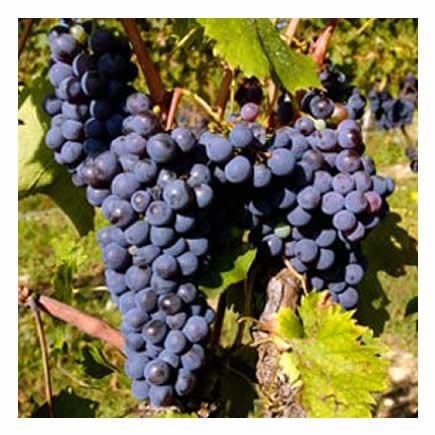 Sangiovese Sangiovese
This is an Italian grape used to make Chianti and other fruity wines, varying in body and tannin content.
|
|
| |
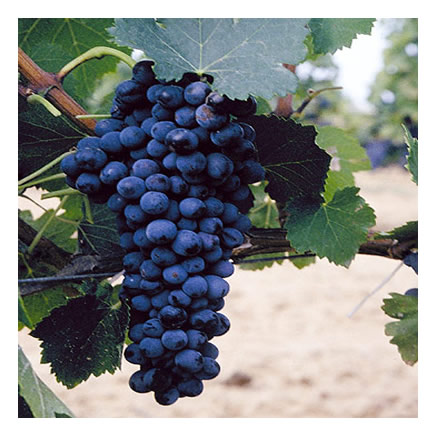 Syrah Syrah
A grape grown in the Rhone Valley in France, Syrah produces a full bodied, dark colored wine rich in tannins. In Australia this grape is known as a Shiraz and is used to elaborate lighter, fruity wines.
|
|
| |
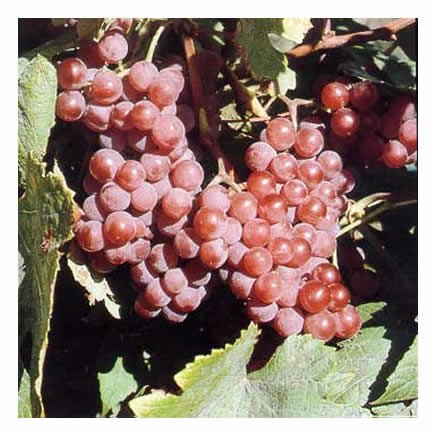 Zinfandel Zinfandel
Despite the fact that it used to make White Zinfandel, this is a red grape. It is one of the oldest grapes grown in California and its origins are a bit mysterious. A red Zinfandel is a rich and colorful wine, high in alcohol content, but it is not cultivated in France.
|
White Grapes - White Wine
|
|
 |
|
|
| |
 Chardonnay Chardonnay
Because it is a very adaptable, you'll find Chardonnay cultivated around the world in varying climates. It makes a rich, fruity wine, infamous for its oak flavors. Sometimes this is because it is aged in oak barrels, but sometimes the oak flavor comes from adding oak chips and even oak essences to the wine as it ages. In France, you can find wine made from Chardonnay grapes that doesn't have this oak flavor, notably Chablis. Chardonnay is one of the principal grapes used to make Champagne.
|
|
| |
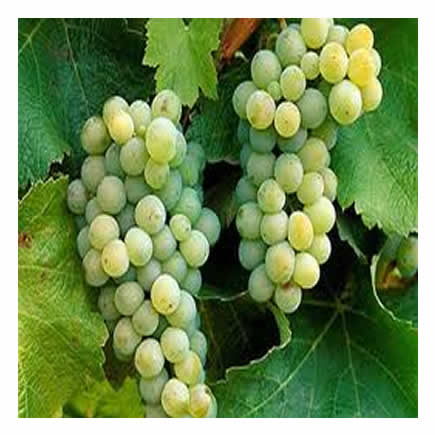 Chenin Blanc Chenin Blanc
In France this grape is grown in the Loire Valley and is used to produce Vouvray and other well known wines. High in acidity, Chenin Blanc produces a viscous wine that gives an impression of thickness in your mouth
|
Gewurtztraminer white grapes
|
| |
 Gewurtztraminer Gewurtztraminer
These grapes produce a flavorful wine with an intense color. Gewurtztraminer was introduced in France in the late 1800's from Germany and the Alsace region is noted for its use of this grape. Despite it's strong fruity notes and high alcohol content, this is a dry or off-dry white wine.
|
|
| |
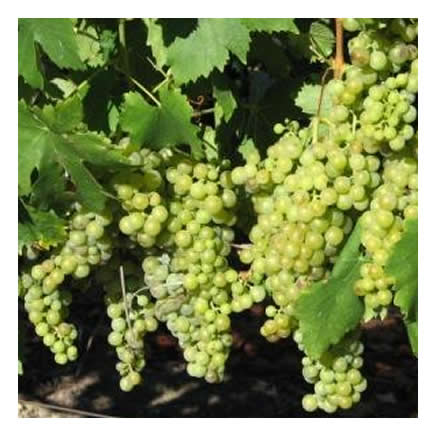 Muscat Muscat
In Europe, the Muscat grape is used to make quite a variety of different wines, including Asti, a sparkling Italian wine, some dry white wines from Alsace, and with the addition of alcohol, sweet dessert wines from the south of France.
|
|
| |
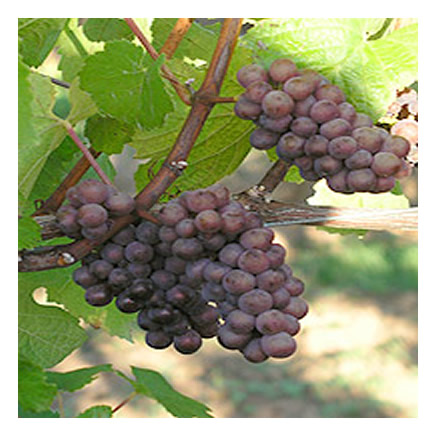 Pinot Gris Pinot Gris
This grape is known as a Tokay in Alsace, the only French wine region that grows this varietal, where it is customarily used to make a dry, spicy white wine, although it can also be used to create sweet wines.
|
|
| |
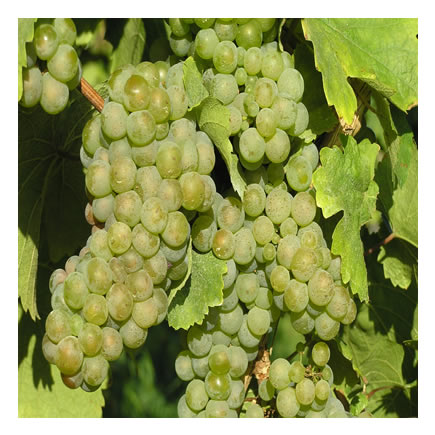 Riesling Riesling
This is a more difficult grape to grow, and outside of Germany there are very few successful Rieslings. In France, the Alsace region makes wines using this grape. It produces a light refreshing wine, some sweet and some dry.
|
|
| |
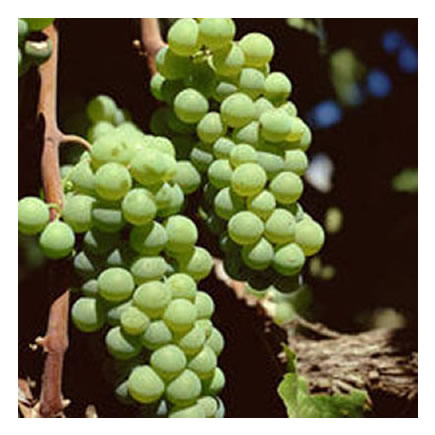 Semillon Semillon
Frequently combined with Pinot Blanc, this grape produces a wine with subtle aromas and relatively low acidity. It is used along with Sauvignon Blanc to make Sauternes, a sweet white wine from the Bordeaux region.
|
|
| |
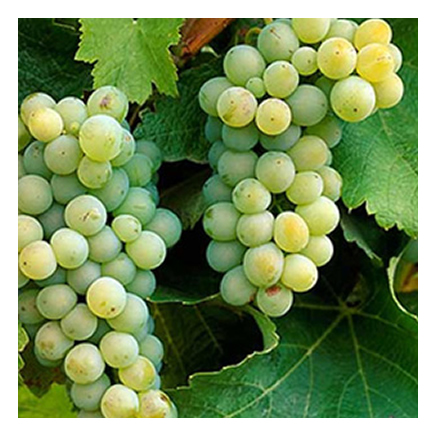 Sauvignon Blanc Sauvignon Blanc
This grape produces a characteristically grassy, acid and usually dry wine. You will frequently find it with oak flavors, but in France you can easily find it without. Sauvignon blanc is used to make Bordeaux blanc as well as several wines from the Loire Valley region, notably Pouilly Fumé and Sancerre.
|
Home | Advertising Information | Contact Us
Copyright ©2002 Italian Recipes Trinakria Development. All rights
reserved. |
 |
|

 The Wine Making Process
The Wine Making Process Destemming
Destemming Crushing
Crushing Primary Fermentation
Primary Fermentation Pressing
Pressing Secondary Fermentation
Secondary Fermentation Filtering
Filtering Bottling
Bottling Cabernet Sauvignon
Cabernet Sauvignon Gamay
Gamay Merlot
Merlot Pinot Noir
Pinot Noir Sangiovese
Sangiovese Syrah
Syrah Zinfandel
Zinfandel Chardonnay
Chardonnay Chenin Blanc
Chenin Blanc Gewurtztraminer
Gewurtztraminer Muscat
Muscat Pinot Gris
Pinot Gris Riesling
Riesling Semillon
Semillon Sauvignon Blanc
Sauvignon Blanc